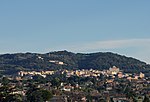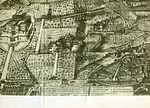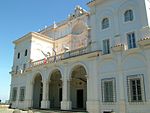Roman Catholic Suburbicarian Diocese of Frascati

The Diocese of Frascati (Lat.: Tusculana) is a suburbicarian see of the Holy Roman Church and a diocese of the Catholic Church in Italy, based at Frascati, near Rome. The bishop of Frascati is a Cardinal Bishop; from the Latin name of the area, the bishop has also been called Bishop of Tusculum. Tusculum was destroyed in 1191. The bishopric moved from Tusculum to Frascati, a nearby town which is first mentioned in the pontificate of Pope Leo IV. Until 1962, the Cardinal-Bishop was concurrently the diocesan bishop of the see in addition to any curial duties he possessed. Pope John XXIII removed the Cardinal Bishops from any actual responsibility in their suburbicarian dioceses, and made the title purely honorific.
Excerpt from the Wikipedia article Roman Catholic Suburbicarian Diocese of Frascati (License: CC BY-SA 3.0, Authors, Images).Roman Catholic Suburbicarian Diocese of Frascati
Via P. di Spinetta,
Geographical coordinates (GPS) Address Nearby Places Show on map
Geographical coordinates (GPS)
| Latitude | Longitude |
|---|---|
| N 41.8167 ° | E 12.6833 ° |
Address
Via P. di Spinetta
Via P. di Spinetta
00044
Lazio, Italy
Open on Google Maps








